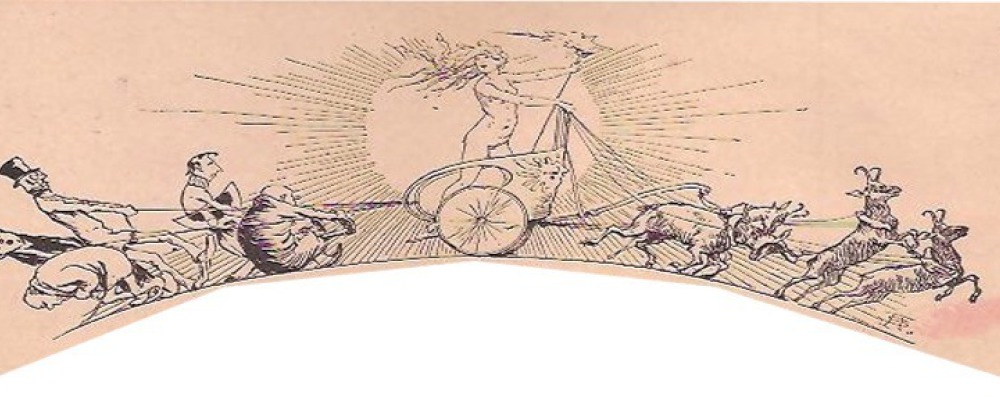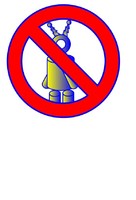
German Foreign Minister Sigmar Gabriel on Saturday, 3rd February 2018, in a speech in Berlin:
"This organized mass murder was committed by our country and by no one else. Individual collaborators do not change that."
Marie-Josenhans-Institute to Sigmar Gabriel: Not just "individual collaborators" participated in the Holocaust, but certain European governments as well - as in France
written on Monday, 5th February 2018
Sigmar Gabriel has said on Saturday, 3rd February: "There is not the slightest doubt as to who was responsible for the extermination camps, operated them and murdered millions of European Jews there: namely Germans. This organized mass murder was committed by our country and by no one else. Individual collaborators do not change that."
But was the “organized mass murder”, which we call Holocaust, really committed by Germany alone – “and by no one else”, as Gabriel states? Were there only non-German “individual collaborators” involved?
Let us have a look at France. German historian Ahlrich Meyer asked in his book “Täter im Verhör” (my translation: “Perpetrators interrogated”), edited in 2005 by Wissenschaftliche Buchgesellschaft, this question: “Wer war beteiligt?” (“Who was involved?”).
His reply (on page 21): “Wie überall waren auch in Frankreich zahlreiche deutsche Stellen an der ‚Endlösung‘ beteiligt, die dabei ihrerseits – schon allein aus Personalgründen, aber auch zur Deckung antijüdischer Maßnahmen gegenüber der französischen Bevölkerung – auf eine Zusammenarbeit mit dem formell souveränen Vichy-Regime und dessen Polizeikräften angewiesen blieben.“ („Like everywhere, in France, too, numerous German offices participated in the ‘final solution’; and these offices were dependent on a cooperation with the officially sovereign Vichy regime and its police forces – just due to reasons of staff, but also to legitimize the Anti-Jewish steps in the eyes of the French population.”)
Meyer gives the following details on this cooperation between German offices participating in the “final solution” and the Vichy regime and its police forces:
René Bousquet, general secretary to the Vichy regime police, suggested on 2nd Juli 1942 to hand over Jews from the non-occupied part of France. On 4th July 1942 Pierre Laval, head of government of the Vichy regime, confirmed this offer. On the same day Laval offered to deport children under 16 years of age. (page 149)
Again on 2nd July 1942 Modest Graf von Korff, chief of SD Chalons-sur-Marne, asked the French prefects of his district to concentrate all the Jews able to work in a camp at Chalons-sur-Marne. And in fact, on 20th July 1942 French police arrested 43 persons who were imprisoned in Chalons and then brought to Drancy. On 27th July nearly all of them were deported to Auschwitz. (p. 153)
In the night of 15th July 1942 the French police arrested 70 Jews in the Bordeaux area. The children which were arrested with their parents were given to other families or to children homes, then
captured again at the end of August and brought via Drancy to Auschwitz (p. 155). This “tragic episode”, Meyer says, is connected with the name Maurice Papon. The adults’ train transport from
Bordeaux to Drancy was guarded by French policemen (p. 156).
In Poitiers there was “ein französisches Internierungslager, das sogenannte ‚Nomaden- und Judenlager‘ Route de Limoges“, „a French internment camp, the so-called camp for nomads and Jews Route de
Limoges”, from where the SD Poitiers took a larger group of Jews to bring them to Angers. On 20th July a train left Angers which arrived on 23rd July in Auschwitz- (p. 157)
Meyer mentions a “Dispositiv der Verfolgung“, a „dispositive of persecution”. Its participants were - among other German offices - the members of SD and Sicherheitspolizei, but also the French police. Its instruments, according to Meyer, were the register dossiers of the French prefectures, the meanwhile established system of French camps and the Wehrmacht prisons. Meyer also says that the police raids on Jews in Paris were handled exclusively by French police forces (p. 162).
So again the question: Was the holocaust committed by Germany alone – were only non-German “individual collaborators” involved? In France, the mentioned examples suggest that there were not just individual French collaborators; mass murder was co-organized by the French government at the time, the Vichy regime.
Marie Josenhans Institut
(Marie Josenhans, 1855-1926, deutsche Sozialarbeiterin und Sozialpolitikerin)
Projekte für die Öffentlichkeit.
Soonim SHIN
Magistra Artium (M. A.)
Staatlich anerkannte
Diplom-Sozialarbeiterin (FH)
Kaiser-Karl-Ring 6
D-55118 Mainz
Robertgasse 1
A-1020 Wien
Post senden Sie bitte
nur per Email
an:

